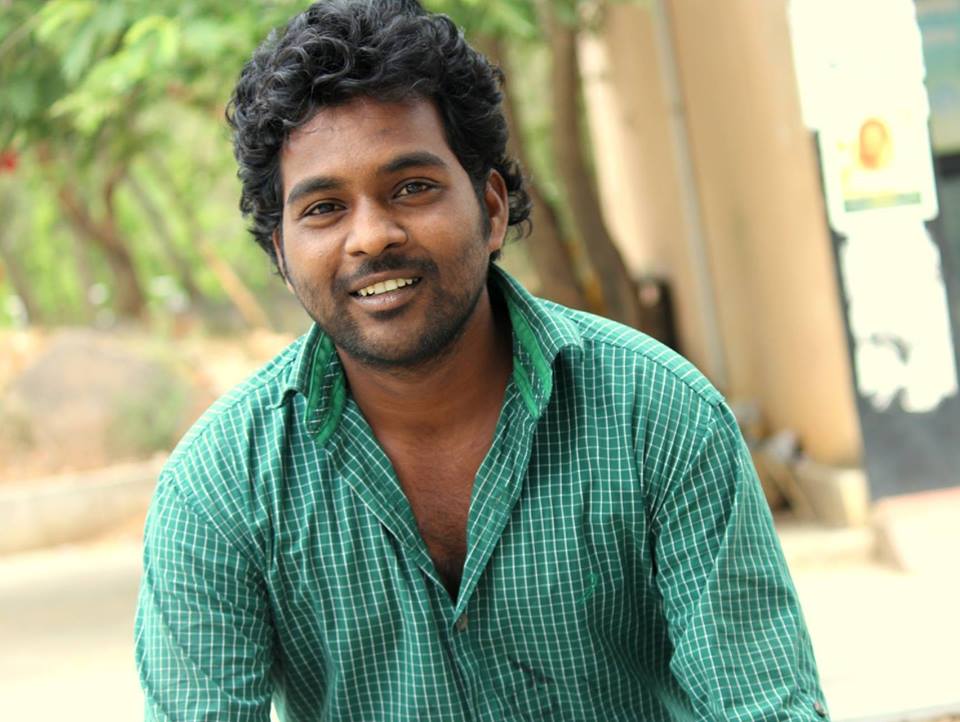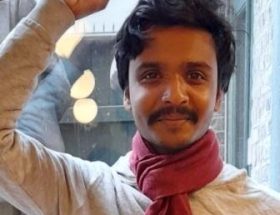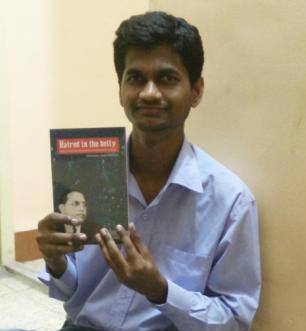Doleswar Bhoi
 Recently, the Indian National Congress and Bhartiya Janata Party (BJP) nominated Meira Kumar and Ram Nath Kovind as presidential candidate of India respectively. Both Meira Kumar and Ram Nath Kovind belong to the Dalit Community. The Dalit community refers to the lower castes in the socio-economic, political and cultural discourses of Indian Caste Hindu society. Gandhi glorified them as “Harijan”, a term Ambedkar vehemently condemned. It was the British government that categorized them as the “Scheduled Castes”. The same was done in the case of the Scheduled Tribes. The Dalits constitute around 20 percent of the country’s population. They still face caste-based discrimination, hatred, and prejudice and bias on a daily basis, something that often cripples their confidence and creates a feeling in their mind that they are reduced to “second-grade” citizens.
Recently, the Indian National Congress and Bhartiya Janata Party (BJP) nominated Meira Kumar and Ram Nath Kovind as presidential candidate of India respectively. Both Meira Kumar and Ram Nath Kovind belong to the Dalit Community. The Dalit community refers to the lower castes in the socio-economic, political and cultural discourses of Indian Caste Hindu society. Gandhi glorified them as “Harijan”, a term Ambedkar vehemently condemned. It was the British government that categorized them as the “Scheduled Castes”. The same was done in the case of the Scheduled Tribes. The Dalits constitute around 20 percent of the country’s population. They still face caste-based discrimination, hatred, and prejudice and bias on a daily basis, something that often cripples their confidence and creates a feeling in their mind that they are reduced to “second-grade” citizens.
So far 13 people have served as the president of India. The next will be the 14th president of India. Here some questions arise as to who were the former presidents of India? Which states did they belong to? What were their caste and religion? The list of Presidents of India has been explained below Table-1 with the name of former presidents and the states they belong to. The table illustrates that there is only one president who belonged to the Dalit community; one woman president and three presidents belonging to the Muslim community. In other words, there have been five/six people belonging to marginalized (SC, women and religious minorities) sections of society, who became presidents of India. Also till now, there has been no president from the Scheduled Tribes. In this context, the present article tries to understand the reason behind the nomination of a Dalit, Ram Nath Kovind, instead of choosing a senior leader and personality of BJP like L. K. Advani or others for the presidential post.

Reasons behind selection
When the BJP selected a Dalit, Ram Nath Kovind, it led to discussion among people irrespective of their caste, gender, and religion. Many people consider this action of NDA government of selecting a Dalit candidate for the post of the President of India as vote bank politics – to win the 2019 general election and to create a division among Dalits. There might be some truth in the above discussion but considering the ideology and aims of the BJP and its allied organizations is to make India a Hindu Rashtra, the reasons may be as following for selecting a Dalit candidate.
Anger Management
Caste-based discrimination against Dalit is still rampant, be it disguised or open. There have been instances of Dalit students committing suicide due to their inability to withstand such discrimination. The institutional murder of Rohith Vemula of Hyderabad Central University last year shook the country. Five Dalit youths were flogged and beaten almost to death by the lumpen and self-appointed “gau rakshaks” in Gujarat for skinning a dead cow. Last year, a 22-year-old Dalit boy was killed in Nagar, Maharashtra, for setting a tune related to Ambedkar on his mobile phone. Recently, a Dalit woman was paraded naked in Buldhana district of Maharastra for the alleged offense of theft. Earlier this month, a sedition case was filed by the Haryana government against 10 Dalit students of Kurukshetra University because they had a grievance against the university authorities, and, recently the issue of Saharanpur was in the news, where the Thakurs committed atrocities against Dalit community.
The above incident happened under the present government and these are, directly and indirectly, incidents committed by the BJP and its allied organizations. Also, still there has been no justice for them. Among Dalit community, there is anger against the BJP government and its allied organizations. So the BJP might be thinking to manage the anger of the Dalit community by projecting a Dalit candidate as the president of India.
To stop conversion
When the BJP formed the government at the centre, soon the allied organization RSS called for Ghar Wapsi and organized it to bring back minorities who had converted Islam, Christianity and other religions into the Hindu fold. They have organized many programs throughout India and there is evidence that a large number of families moved back to the Hindu fold.
Recently, Rohith Vemula’s mother and the people (victims) of Una have left the Hindu religion and converted to Buddhism. Dalits are following the path of Ambedkar. Ambedkar said in his speech at Dadar on 31st May 1936 that “Man is not for religion, religion is for man. To become human convert yourselves, To get organized convert yourselves, to achieve strength convert yourselves, to secure equality convert yourselves, to get liberty convert yourselves, to make your family life happy convert yourself.” They also accepted the 22 vows, which were given by Ambedkar during his conversion. These vows are the main principle of the Ambedkarite movement and have the potential to destroy the brahminical forces. This issue might have alerted the caste Hindu organizations. To stop conversion, they are projecting a Dalit who has served more than three decades in RSS for the purpose and growth of Hindu religion.
Fear of Ambedkarite Movement
The third and most important reason for the selection of a Dalit for the presidential post is the fear of the Ambedkarite Movement. In post-independence India, Ambedkarism is spreading fast with his ideas and ideology throughout the world. People are realizing the relevance of Ambedkar and his ideas, particularly Liberty, Equality, and Fraternity. Sudha Pai (2013), in her book Dalit Assertion, said, “In the last few decades, India has experienced a strong wave of Dalit assertion. As the product of upsurge from below, it manifests itself in the socio-economic, cultural, and political parties, protect literature, a variety of grassroots assertions.” In addition to this, Ambedkarite movement has created few political parties where the marginalized community is leading and believing in the Indian Constitution, Dalit and other Marginalized communities are fighting against oppressive elements.
Ram Nath Kovind, the NDA nominee for president, said to his nephew, as reported by The Indian Express: “Maine Jaise Swayam safalta paayi, vaise tum log bhi mehnat karo (Just as I achieved success on my own, you should work hard for it too)”. This sentence can be understood in two ways. One way of understanding is that he has done hard work to achieve the nomination for president. But another question arises here is that, just like Kovind there would be many Dalits or others from marginalised communities who worked hard throughout their lives, then why weren’t they nominated for president? Another way of understanding his statement is that he is telling the youth in general and the youth from the Dalit community in particular, to jump into RSS. This may be one of the strategies to bring the youth to the RSS fold. Nowadays, the youth of Dalit community are connecting with Phule-Ambedkarite movement and revolting against the brahminical hegemony, for instance, Birsa Ambedkar Phule Student Association (BAPSA) in Jawaharlal Nehru University, New Delhi; Ambedkar Student Association (ASA), University of Hyderabad.
Conclusion
Projecting a Dalit person for the presidential position is a political act. This will never emancipate Dalit community in particular and marginalized sections of society in general from atrocities, discrimination, and hatred. There is a proverb in Hindi that goes “Hathi ka dikhane aur khane ka danth alag hai” . Just like the Brahminical forces are projecting a Dalit to tell all that they are working for the upliftment of the marginalized communities. But it is the same forces that have been discriminating and humiliating Dalits since centuries. To understand the actions of the Brahminical forces, as Ambedkar rightly said, you need to educate, agitate and organize and to know the history to create history.
~
Bibliography
B. R. Ambedkar, Conversion as Emancipation, Critical Quest, New Delhi, 2004
Bhalchandra Mungekar, Dalit Vs Dalit, Indian Express, June 28, 2017, pp.14
Harish S. Wankhede, Ram Nath Kovind and the Making of a Right-Wing Dalit Identity, The Wire, 24/06/2017 (https://thewire.in/150553/ram-nath-kovind-and-the-making-of-a-right-wing-dalit-identity/)
Kadhiravan, The ‘Dalit’ President and the question of representation, Round Table India, 25th June 2017 (http://roundtableindia.co.in/index.php?option=com_content&view=article&id=9116:the-dalit-president-and-the-question-of-representation&catid=119:feature&Itemid=132)
Kancha Ilaiah Shepherd, The Opposition’s Own Brahmanism is Killing Its Relevance, The Wire, 22/06/2017 (https://thewire.in/150128/oppositions-brahmanism-kills-relevance/
Karan Thapar, The Man who won’t be president, Indian Express, June 21, 2017, pp. 14
Ram Madhav, Journey of Ram Nath Kovind, Indian Express, June 21, 2017, pp. 14
Sudha Pai, Oxford India Short Introduction Dalit Assertion, Oxford University Press, Delhi, 2013
~~~
Doleswar Bhoi is presently pursuing Ph.D in Centre for Study of Discrimination and Exclusion, Jawaharlal Nehru University, New Delhi.










